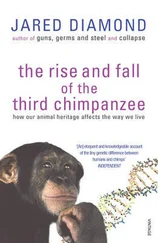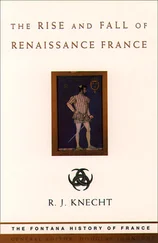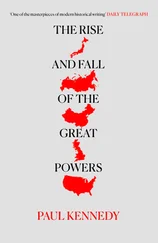All three of the forces for political change mentioned above – the rise of the middle class, the resentment of the poor and the arrival of a new generation of politicians – were as significant in previous industrial revolutions as they are in south-east Asia’s. But there is a fourth phenomenon which is particularly relevant in the world of today: the speed with which information and ideas can be transmitted around the globe, even to the remotest corners of rural Burma or Borneo. It has become very difficult for governments, however dictatorial, to suppress news and views from abroad, as the trial of South Korea’s former leaders showed. Burmese villagers listen to the BBC or Voice of America on their radios, learning not only about international affairs but also about events in their own country that the military authorities have chosen to suppress or distort. Indonesian students download information from the World Wide Web via telephone lines in Jakarta – that is, if they are not pursuing their studies at American or Australian universities. Thai accountants watch satellite television. Singaporean computer engineers can afford to travel abroad and get access to any information they please. Nevertheless most governments in south-east Asia (Thailand and the Philippines are the notable exceptions) do try to restrict what their citizens can see, hear and read. They win the occasional battle with the help of censorship or lawsuits, but they are slowly losing the information war. They are overwhelmed both by the supply of information and by the demand for it from their citizens as the cost of information technology falls and the sophistication of readers and viewers increases. Already people can watch live television discussions with all their unpredictable consequences, participate in free-for-all Internet debating forums and choose from an array of new magazines in English and vernacular languages covering every subject from fashion to foreign policy.
The unprecedented speed of south-east Asia’s industrial revolution has not just affected politics. It has had a dramatic – some would say devastating – effect on societies and cultures. Chapter 3 looks at how tastes, habits, languages, religious beliefs and more are being reshaped, leaving people bewildered, broken – and occasionally happy. Proponents of ‘Asian values’ argued that south-east Asia would be spared the criminality and family breakdowns that normally accompany the migration of millions of people from small villages to impersonal towns during industrial revolutions. The evidence suggests otherwise. Drug abuse is just one example of the modern ills that south-east Asian societies now have to face. Even authoritarian governments admit the region has a serious drugs problem. Not only does it produce much of the world’s heroin – derived from the poppy fields of Burma and Laos and exported with the connivance of powerful businessmen and officials through Thailand, Cambodia and Vietnam – it has also become a big consumer of drugs. Teenagers sniff glue in the Lao capital Vientiane; truck drivers take amphetamines to keep themselves awake on the roads of Thailand; heroin addicts have multiplied in Malaysia and Vietnam, where the drug is sold at the base of Lenin’s statue in central Hanoi; and the children of the new rich pop Ecstasy pills or snort cocaine in the discotheques of Bangkok and Jakarta. Alcoholism is a problem too, even among Moslems for whom alcohol is forbidden by the Koran. The reasons given for crime and drug-taking, and the tales of how each feeds on the other, rarely seem particularly ‘Asian’. In fact they would be wearisomely familiar to newspaper readers in the US or Europe. Heroin addicts and ‘street-children’, the youngsters who beg, shine shoes or prostitute themselves to earn a living, speak of broken homes and the despair of those who are left out of the economic race. The richer kids who hang around shopping malls in Malaysia or race their motorcycles around the lakes in Hanoi complain about the ennui of modern city life and the inability of their parents to understand them. Concerned governments in Vietnam and Malaysia have mounted strident campaigns against ‘social evils’, but they have met with cynicism from their teenage targets, who fail to see why governments are more concerned about youthful misdemeanours than corruption in high places.
Not all social changes are the object of outright condemnation. Some are welcomed, others are merely controversial. The most visible aspects of the social revolution are the goods and services that people have started to consume. In the cities, they drink wine and eat take-away pizzas as well as local food and drink. Irish theme pubs have sprung up in Phnom Penh, Hanoi and Bangkok. People shop at 7–11 corner stores and in shopping malls (‘I went malling’, said one Filipina recently when asked what she had done at the weekend) as well as at market stalls. They watch soccer on television, and play golf in addition to badminton. They drive Toyotas and Volvos. They go to Michael Jackson concerts in Bangkok and listen to Hootie and the Blowfish in Jakarta. They watch dubbed or subtitled Hollywood movies. They work and live in concrete buildings indistinguishable from those in London, Frankfurt or Oklahoma, and inside them they use computers with software made by Microsoft. They sit on modern toilets manufactured by American Standard or its Japanese rivals. Even in the countryside, farmers drive Honda motorcycles and watch televisions made by Mitsubishi. It is true that each Asian market remains distinctive, that very few Asians watch television programmes in English, and that a truly global sense of culture lies far in the future: Thais do not become American just because they go to American fast food outlets, any more than the inhabitants of San Francisco adopt Thai habits after eating a Thai meal. Still, cultures are heavily influenced by the increasing contact between south-east Asia and the rest of the world. Languages absorb words from America just as they used to co-opt the Dutch, French and English vocabulary of the colonial powers. Modern south-east Asian music, architecture and fashion often draw on the traditions of both east and west.
Family relationships and attitudes to sex are changing too, although at a much slower pace than shopping habits. Loyalty to an extended family of cousins and in-laws is gradually giving way to the nuclear family of mother, father and children more typical of modern cities. Single men and women independent of spouses or parents are beginning to make an appearance on the radar screens of market research companies, even if most people continue to live with their parents until marriage. The anonymity of city life and the availability of contraceptives have removed most of the impediments to pre-marital and casual sex. For liberals, this is all good news. Young people enjoy more freedom and are no longer constrained by the old-fashioned customs of their ancestors. Women are less likely to be regarded as subordinate to men, and some are beginning to shine as bankers, businesswomen and politicians. Homosexuality is more widely accepted, too.
But there is a bad side to these new-found freedoms. The young feel insecure because they can no longer rely on numerous relatives to look after them, find them jobs or lend them money when times are hard. The old begin to worry that their offspring will not provide for them in old age (hence the Singaporean law of 1995 – the Maintenance of Parents Act – making it compulsory for children to support needy parents in old age). Divorce rates are rising in several countries in the region. Worse, there is evidence in Indonesia and elsewhere that young girls, amoral and materialistic, have begun to engage in casual prostitution with older men in order to buy the designer clothes they could not otherwise afford, a phenomenon previously noticed in Japan. Professional prostitution, meanwhile, continues to flourish in the region on a grand scale, while gigolos in Bali ply their trade with foreign women much as Tunisian men do at the beach resorts of North Africa. Some sociologists argue that what they call ‘contractual sex’ has always been an integral part of life in, say, Thailand and Vietnam. 5 Yet the increased mobility within and between countries that is the inevitable result of the industrial revolution has raised some new and disturbing issues. The disease AIDS is wreaking silent havoc in countries where both intravenous drug abuse and casual sex are common. Paedophiles from the West and from other Asian countries such as Taiwan have Cambodia, Thailand and the Philippines high on their list of destinations. Pornographic videos are widely distributed in Indochina. Rape is common. Such problems afflict other countries where half the population has moved from villages to cities. But the Asian leaders who have convinced themselves that these issues are ‘western’ in origin rather than simply modern are finding them particularly difficult to solve.
Читать дальше












